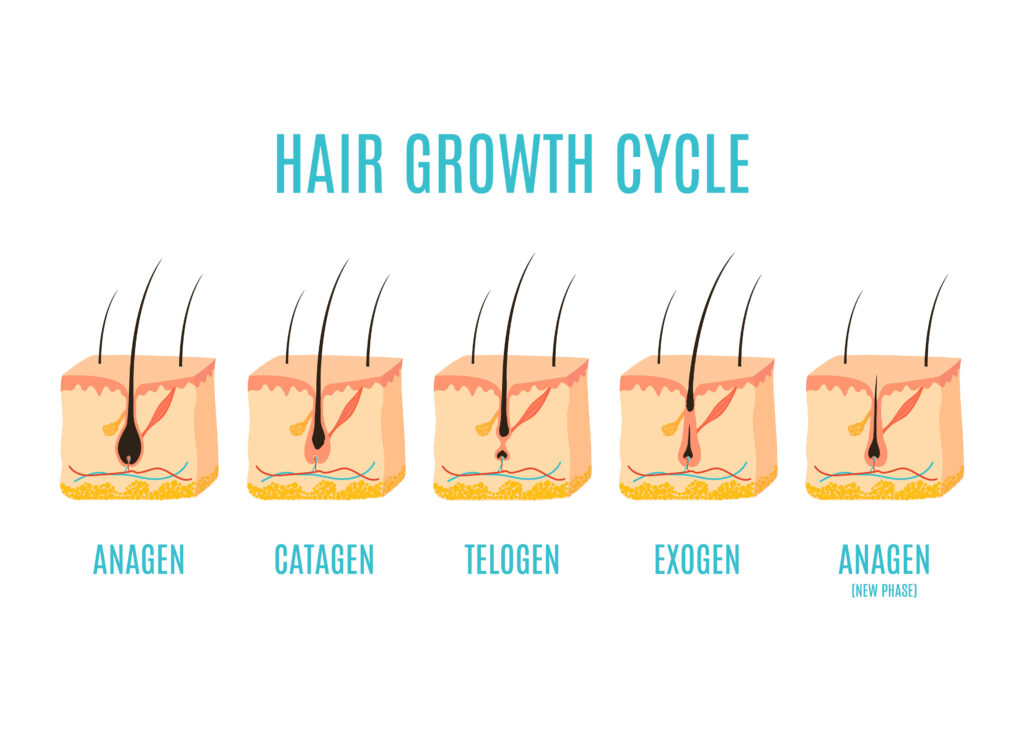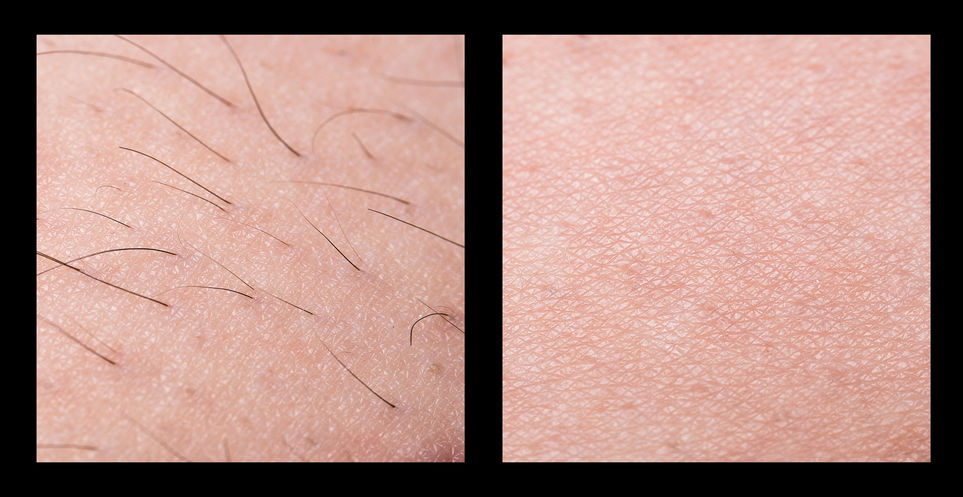When looking for hair removal, it’s safe to say that people generally want the longest possible time with no hair that they can possibly achieve, within reason. While permanent hair removal is a reasonable goal, once you understand more about hair growth and how hair removal works, you’ll be better prepared to set realistic expectations.
How Long Does Laser Hair Removal Last?
Since hair grows in cycles, you’ll probably find that you’ll be asked to do laser hair removal treatments every 4-6 weeks or 6-8 weeks at the most. This enables treatment to target as many hairs in the growth (Anagen) phase as possible which is the only phase where laser hair removal can successfully kill a hair.

Since hairs can be in any of the four phases at a given time, any hairs in the other 3 phases may continue growing after treatment and will need to be treated when the hair from each of those follicles is in the growth phase in the future.
So that’s why a strict laser hair removal schedule makes sense: To hit as many hairs continuously in the Anagen growth phase as possible each time.
So for at least your first few treatments you’ll probably find that you’re getting hair growth coming back in 4-8 weeks and going back for more treatments at that time.
Is Laser Hair Removal Permanent?
No, which is why you shouldn’t see permanent hair removal listed as a guaranteed outcome. Only electrolysis can claim that.
But laser hair removal can reduce the total amount of unwanted hair you have, permanently. There is a difference. People throw permanent hair removal around without offering any proof but on this website you’ll see numerous research reports quoting specific numbers and results of hair removal patients, that you might also experience yourselves. A few of them are referred to below.
Here’s a good explanation as to how the laser hair removal process works at a high level in the instance when a hair follicle is completely destroyed:
Laser hair removal uses light to target the pigment in individual hairs. The light travels down the shaft of the hair and into the hair follicle.
The heat from the laser light destroys the hair follicle, and a hair can no longer grow from it.
A hair follicle that is destroyed will never grow another hair again. The issue is that during laser hair removal, all hair follicles generally aren’t destroyed and certainly not with one treatment. If the hair follicle is merely damaged, it can repair itself and grow more hair.
While laser can’t guarantee that all hair will permanently disappear, it can offer permanent hair reduction.
And how long does permanent hair reduction last?
A Danish study that I spoke about on this page suggested that over 50% hair reduction was achieved 5-9 years after treatment by almost 90% of patients studied.
What Is Permanent Hair Reduction?

Laser and Intense Pulsed Light (IPL) hair removal machines are often said as offering – at best – permanent hair reduction with repeated treatments over time as part of a treatment regimen.
What is permanent hair reduction? In their letters to manufacturers who are trying to get their hair removal products cleared or approved for use, here is the statement I’ve seen repeatedly used by the Food & Drug Administration:
Permanent hair reduction is defined as the long-term stable reduction
FDA.go
in the number of hairs re-growing when measured at 6. 9. and 12 months after the completion of a treatment regimen.v
That explains why a number of the research reports I’ve quoted on this website show hair removal results at 6, 9 and 12 months after treatment.
Given that the complete cycle of a hair may last up to 7 years though, this doesn’t preclude previously dormant hairs from growing in the future that would then need to be removed.
A percentage of reduced hair that must be achieved isn’t actually mentioned. How much total hair that could possibly be reduced by the end of this time period obviously depends on how much hair you have to remove, the location of the hair and other factors not specified.
I have more recently read research that discusses hair removal follow ups 7.7 years on average for a longer term view of how hair removal (Intense Pulsed Light in this case) worked.
Conclusion
- Permanent hair removal is only offered by electrolysis often with repeated treatments.
- Permanent hair reduction can be achieved with laser and Intense Pulsed Light hair removal with repeated treatments.
- Permanent hair reduction is defined by the FDA as being measurable up to 12 months following the last treatment which is why many hair removal research reports measure at 6, 9 and 12 months.
- Other research has studied long term hair removal for 7.7 years on average to get a truer long term view.
Recent Posts
Laser hair removal may not be as effective for individuals with red hair, as well as those with blonde, gray, or white hair, because the laser targets the pigment (melanin) in the hair follicle....
Laser remains a very popular form of hair removal and for several reasons. While not a permanent hair removal option like electrolysis, the benefit of laser is that it enables you to treat more...


